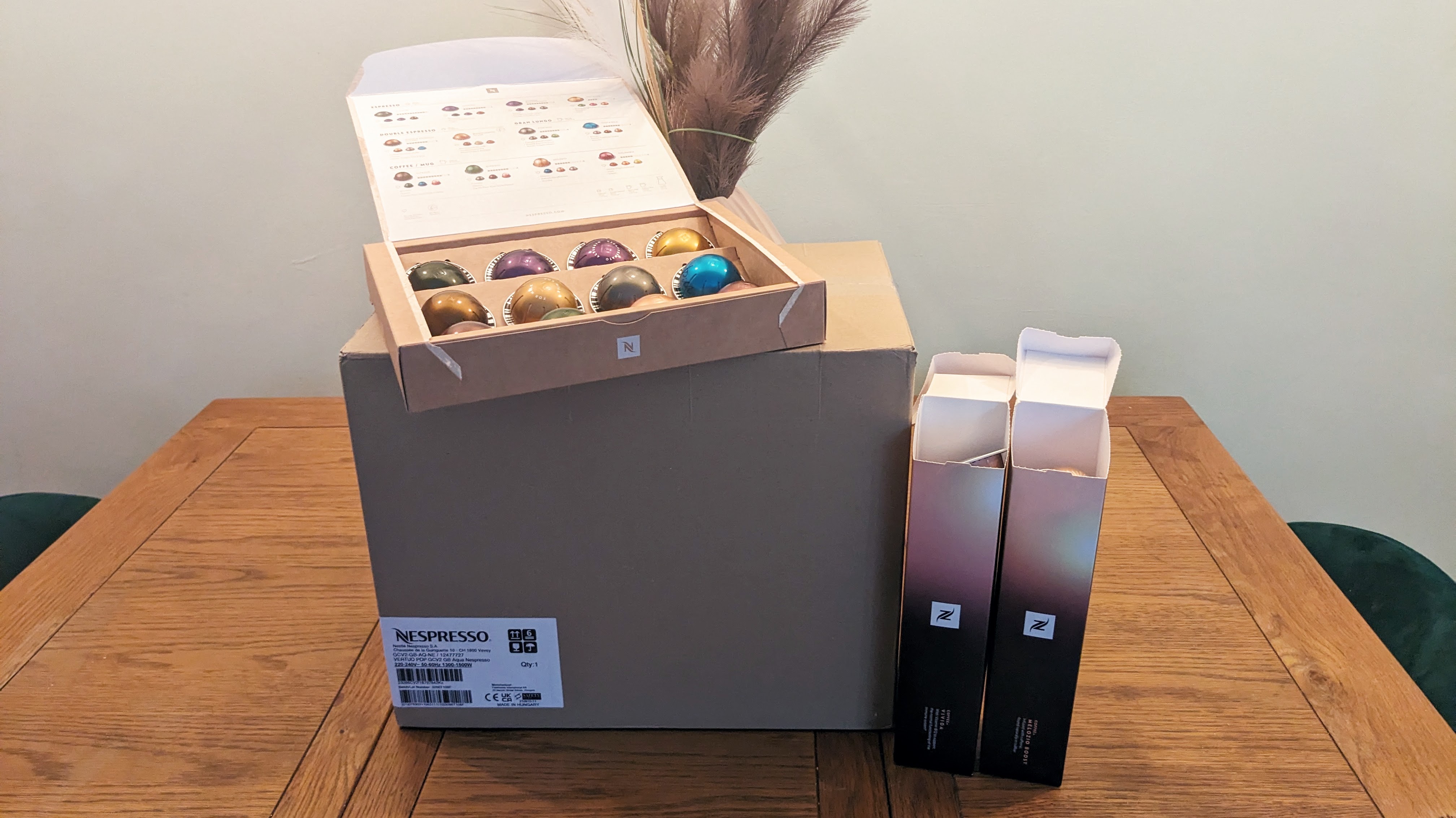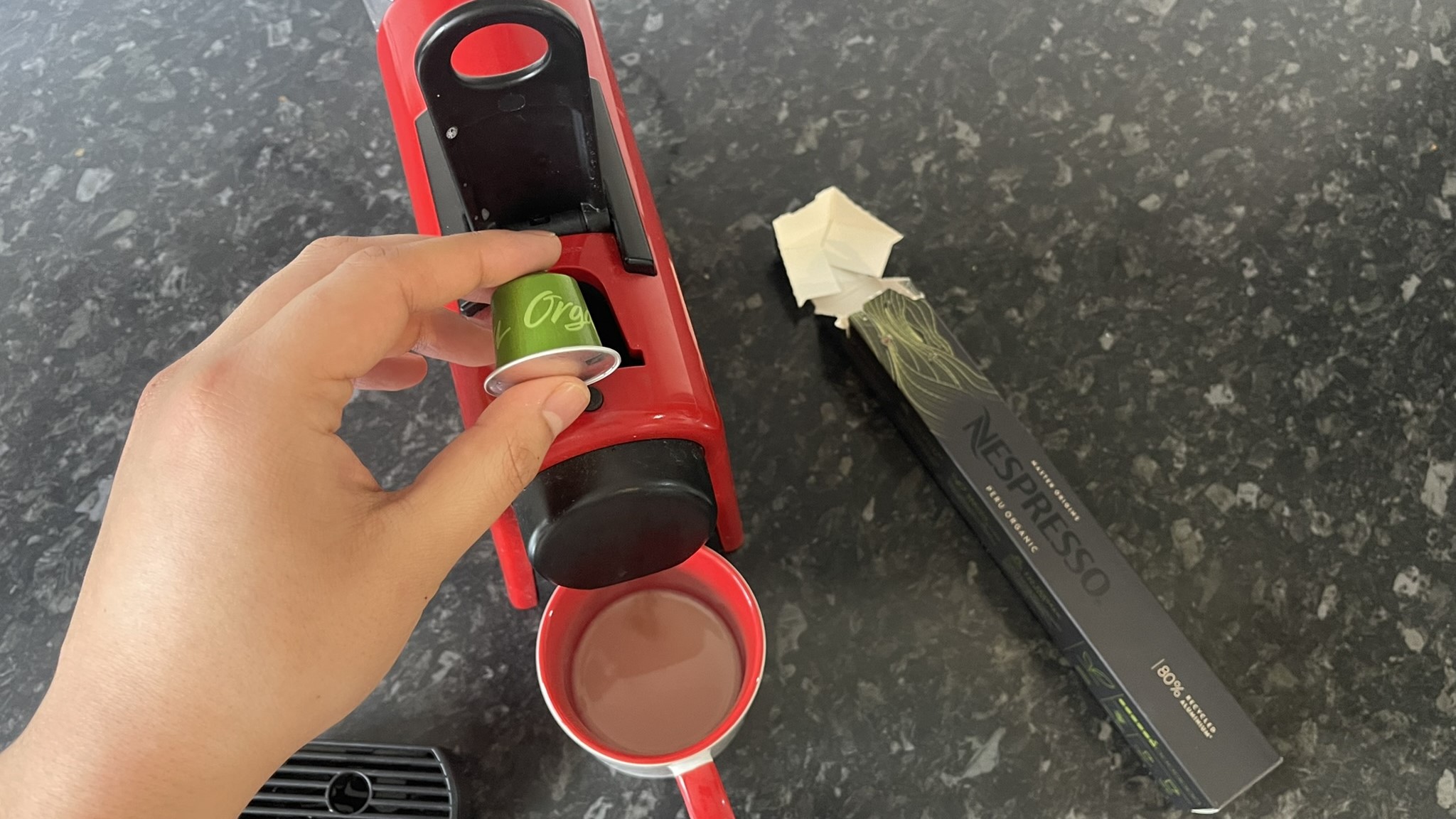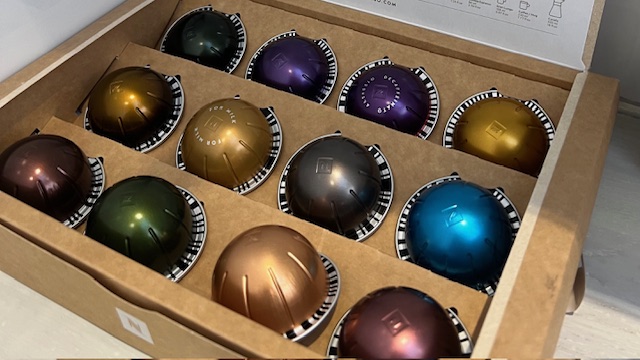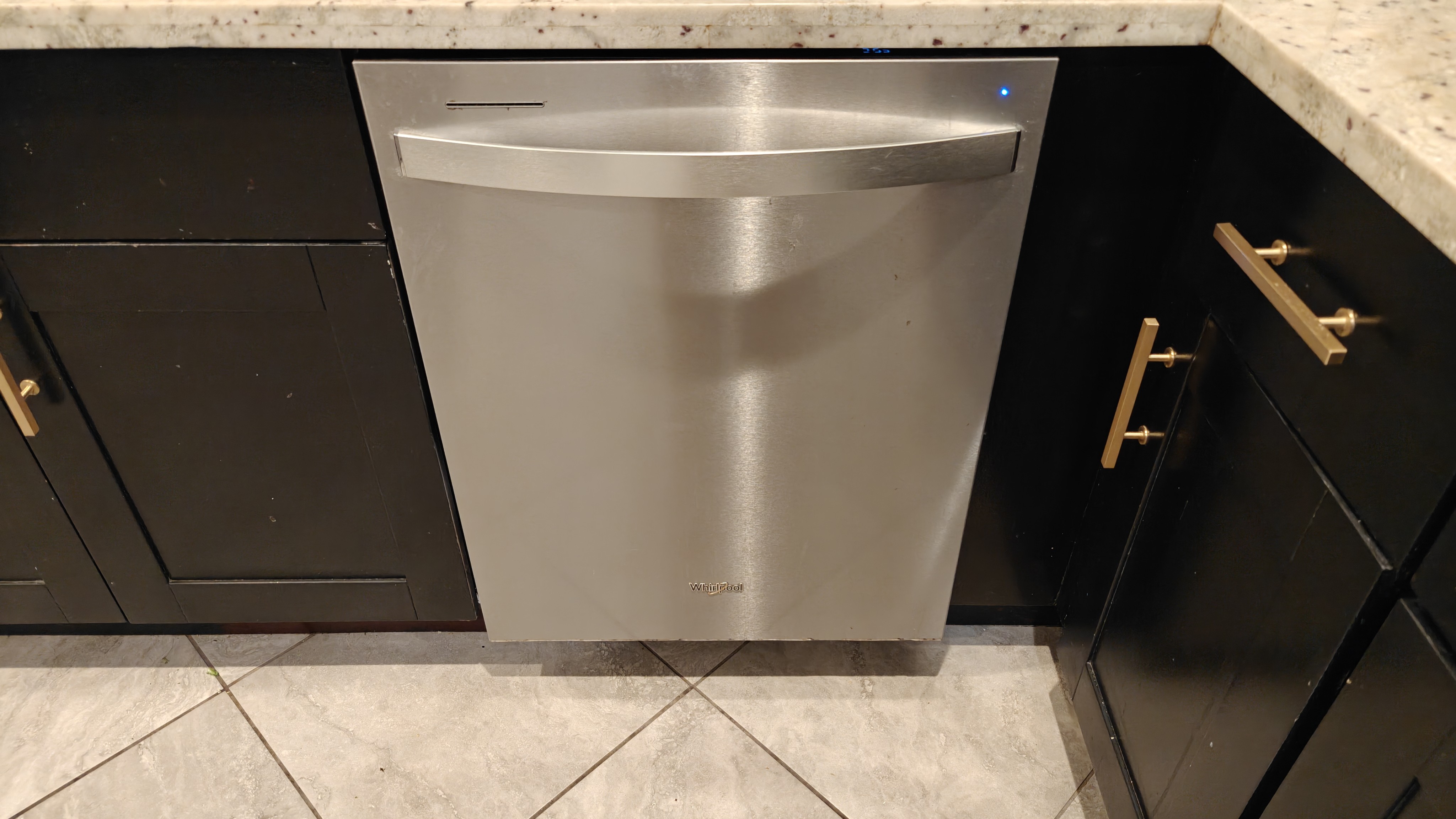Do Nespresso pods expire? And how to tell they've gone bad
Nothing good lasts forever

Nespresso pods have made it a breeze to make café-style, quality coffee at the press of a button, and there are dozens of flavors to choose from, including seasonal limited edition capsules. This wide range is one of the biggest selling points of the best Nespresso machines.
Yet to get the full benefit of this wide flavor range, you may need to stock up on multiple pods, which can leave some lingering at the back of a cupboard while you rotate your faves. If this sounds like you, or you've found a box of pods that you'd forgotten about, you might be worried about drinking them in case they've gone stale or even bad.
In this guide, we explain everything you need to know about Nespresso pods from how they're made and sealed, to how long they last and if they expire. We also get expert advice on how to tell if they're past their best and how to store them effectively from James Bellis, CEO and founder of Balance Coffee.
How are Nespresso pods made?
Nespresso pods are engineered deliberately to keep the coffee inside tasting fresh and full of flavor, even if they're stored in a cupboard for a while.
Each capsule is made of aluminum, which acts as a barrier to light, moisture, and air. Nespresso then adds a layer of food-grade lacquer inside each pod to make sure the aluminum doesn't affect the taste of the coffee, and vacuum seals the coffee grounds to keep them from being exposed to oxygen.
"Without this seal, the coffee would oxidise much faster, and you’d end up with stale, flavorless coffee in a matter of weeks," said James Bellis, CEO and founder of Balance Coffee. "It definitely extends the shelf life of the pods."
Sign up to receive the latest news, reviews, buying guides and deals direct to your inbox

Do Nespresso pods expire?
Due to the way they're made, Nespresso pods don't expire in the traditional sense. As long as they remain sealed, they don't spoil and you don't have to worry about the pods becoming harmful to drink, or causing food safety issues.
However, there is a window within which the coffee in each pod will taste its best and this is represented by a "best before" date printed on the side of the box, or at the bottom of each capsule. This best before date is a recommendation, given by Nespresso to make sure you enjoy the coffee at its peak freshness and flavor and while Nespresso guarantees a shelf life of two months, it claims the coffee in its capsules stays fresh for at least a year after production.
This doesn’t mean that the coffee suddenly goes bad the day after this recommended date, but coffee naturally loses some of its characteristics the longer its stored. Even with the best storage, the oils in coffee degrade, leading to a loss of complexity in flavor and texture.
The only exception is if the pod itself is damaged. If it's been punctured, crushed, or exposed to extreme conditions like heat or moisture, air could seep in and make the coffee degrade faster.
Before brewing, always take a quick look at the pod to make sure it’s intact. If you see any dents, punctures, or other visible damage to the capsule, it’s best to get rid of it. You can also test the freshness of a capsule by gently pressing the silver membrane. If it offers resistance, the capsule can still be used. If it sinks in, it's a good idea to throw that capsule away.

James Bellis is a professional barista, and CEO and founder of Balance Coffee. He was previously a barista trainer for UCC Coffee and Sales Director at Italian espresso machine manufacturer, Sanremo.
How to tell if Nespresso pods are passed their best
"When a pod is past its prime, you’ll notice a real drop in flavour complexity," continued Bellis. "The coffee will taste flat and dull. Fresh coffee has a vibrant acidity and brightness, but as it ages, those qualities fade quickly – you might even detect a slight cardboard or stale taste. It's like drinking a cup of coffee that’s lost its soul; it just doesn’t quite hit the same."
Here are some key signs to look for when determining whether your Nespresso pods have lost their freshness.
1. Loss of Aroma
One of the first and most noticeable signs a Nespresso pod has passed its prime is a loss of aroma. Fresh Nespresso pods typically release a strong smell when opened and brewed. If you find that this smell is significantly weaker or missing altogether, it’s likely the coffee inside the pod has begun to stale.
2. Loss of flavor
Fresh Nespresso pods should make bold, rich coffees. However, when a pod is passed its best, the coffee can taste noticeably flat or dull. If you find your coffee tastes weak or isn't as rich or full as normal, this could be a sign that the pod has lost its freshness.
3. Thin or missing crema
Crema – the creamy, foam-like layer that sits on top of an espresso – is one of the signature features of a fresh, well-brewed Nespresso shot. It forms when air mixes with the oils in the coffee during the extraction process, which you can read more about in our guide to how pod coffee machines work. Fresh pods produce a thick, golden crema that feels smooth when you drink the drink. If your coffee is missing this layer, or if the crema is thin, weak, or disappears quickly, it’s a sign the coffee oils inside the pod may have degraded.
4. Poor brewing performance
Another, less obvious sign that your Nespresso pod may have aged is how the machine performs during the brewing process. If you notice that your machine is struggling to extract coffee – perhaps the flow is weaker or slower than usual, or the machine makes unusual noises – it could be a sign that the pod’s coffee grounds have clumped or lost their ideal consistency. This can affect how well the water passes through the grounds during extraction, resulting in a weaker brew or uneven flavor. While this isn’t as common as the other signs, and can also be an indicator that you need to clean or even replace your machine, it’s something to be aware of. Especially if your machine runs smoothly with fresh or new pods.
How to store Nespresso pods
Due to their airtight seal, Nespresso pods are more forgiving in terms of storage than coffee beans or grounds in bags. However, it's still worth storing them properly to maintain the quality for as long as possible.
"I always recommend storing Nespresso pods in a cool, dry place away from sunlight," said Bellis. "Heat and moisture are the enemies of fresh coffee."
This means they should be ideally kept in a cupboard or pantry, away from appliances that generate heat, such as ovens or coffee makers, and away from a window where the sunlight could cause the aluminum to heat up.
"A myth is storing coffee in the fridge," continued Bellis," but I'd say avoid that at all costs – condensation can ruin the pods. The main goal is to keep air and light out, which helps maintain the flavor and a longer shelf life."
If you want to keep your pods organised and easy to access, consider using a dedicated pod dispenser or an airtight container. Nespresso sells a $60 Drawer Dispenser, as well as the $35 glass Lume Mia Dispenser among other storage accessories. These can help protect the pods from environmental factors like humidity, and keep your kitchen tidy. However, any airtight container will do.

FAQs
How long do Nespresso pods last after the best before date?
Nespresso pods will last for months and even years past their best before date. For the best possible taste, it’s recommended to use the pods within 12 months of their production date. As time passes, you’ll likely notice the flavour becoming less intense and the aroma fading. However, if you’re not too fussy about minor changes in taste, the pods can last much longer while still being perfectly drinkable.
Can I drink Nespresso coffee past the best before date?
Yes, you can still drink Nespresso coffee after the best before date has passed. This date is a guideline only, given by Nespresso as a way of knowing when the coffee will be at its peak flavour and freshness.
Can I recycle Nespresso pods?
After using a pod, you can collect the used capsules in a bag and return them to Nespresso for recycling. The aluminum is infinitely recyclable, which means it can be melted down and reused to create new products.
If your pods are damaged but still contain coffee grounds, you have to remove the grounds before sending the pods back. These grounds are good for compost.

Victoria Woollaston, with nearly 20 years of experience, has reviewed gadgets, beauty tech, and household appliances for WIRED, TechRadar, and Expert Reviews. She specializes in critiquing coffee makers and small appliances for Top Ten Reviews. Victoria is also the founder and editor of inclusive beauty and grooming sites mamabella and MBman.
